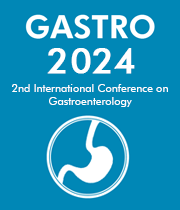Title : Reverse multiple myeloma: First hepatic amyloidosis then multiple myeloma
Abstract:
Multiple myeloma is the most common type of malignant proliferation of plasma cells which produce monoclonal immunoglobulin. Renal failure, anemia, skeletal lesions, and recurrent infections are the most common clinical manifestations of the disease. Amyloidosis is a group of diseases that involve the deposition of amyloidogenic proteins in various organs and can ultimately lead to multiple organ failure. It has been diagnosed in up to 10-15% of multiple myeloma patients with liver involvement in approximately 5% of the cases. This is a case of 48 years old male patient with past medical history of anemia who presented with persistent anemia and transaminitis to his primary care physician. Upon evaluation patient reported several weeks of weakness and malaise with images that showed hepatic heterogeneous parenchymal echotexture. Liver biopsy was performed and resulted with hepatic amyloidosis. Pathology revels hepatic parenchyma with marked deposition of amorphous material withing sinusoids with compression of hepatocytes, positive Congo red stain and negative iron stain; consistent with hepatic amyloidosis. Patient was evaluated and three months later anemia persisted and visited Hematologist and bone marrow was performed that resulted with lambda monotypic plasma cell neoplasm/myeloma approximately 30% on the core biopsy involving a cellular bone marrow. Positive congophilic deposits on the core biopsy consistent with amyloid. Multiple myeloma that develops more than six months after the diagnosis of amyloidosis is very rare and has been shows to have a worse prognosis when combined. The treatment of patients with hepatic involvement can be more challenging. This case highlights the importance to contemplate multiple myeloma as part of the differential diagnosis after amyloidosis findings that could be masked by other common etiologies. Knowledge about this disease is necessary for clinical practice, not only for early detection but for proper management. It is important to know that the disease can relapse and afterwards patients have a very poor prognosis. Infiltrative disorders should be taken into consideration when patients present with non-specific symptoms and impaired liver function tests. For this reason, physicians should also screen patients for these types of malignancies in order to provide a further work up and earlier diagnosis.
Keywords: hepatic amyloidosis, multiple myeloma, congo red stain, bone marrow, liver biopsy.



